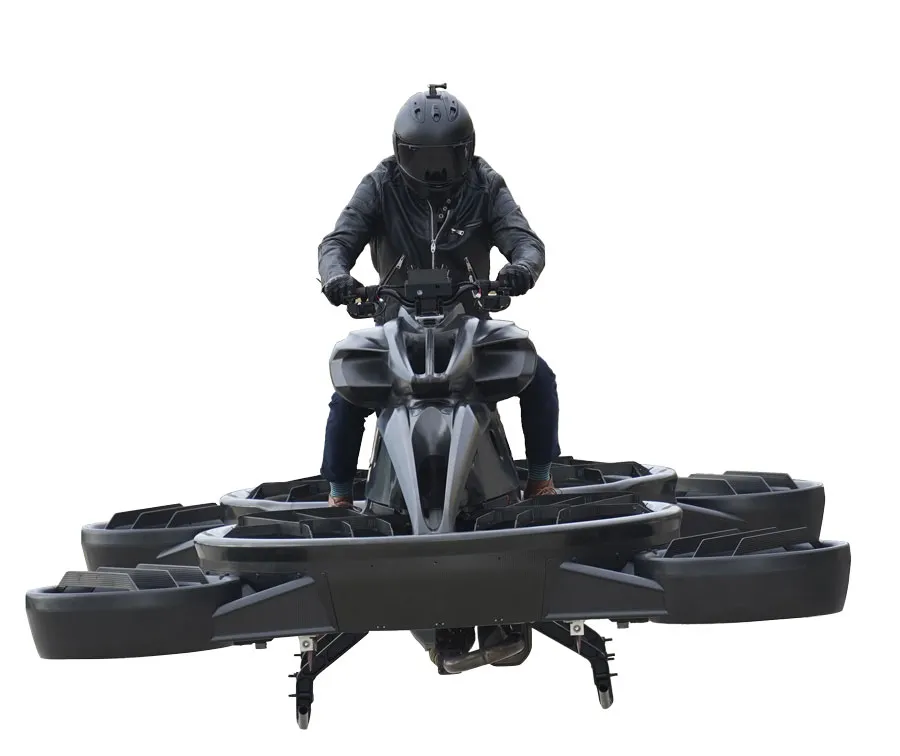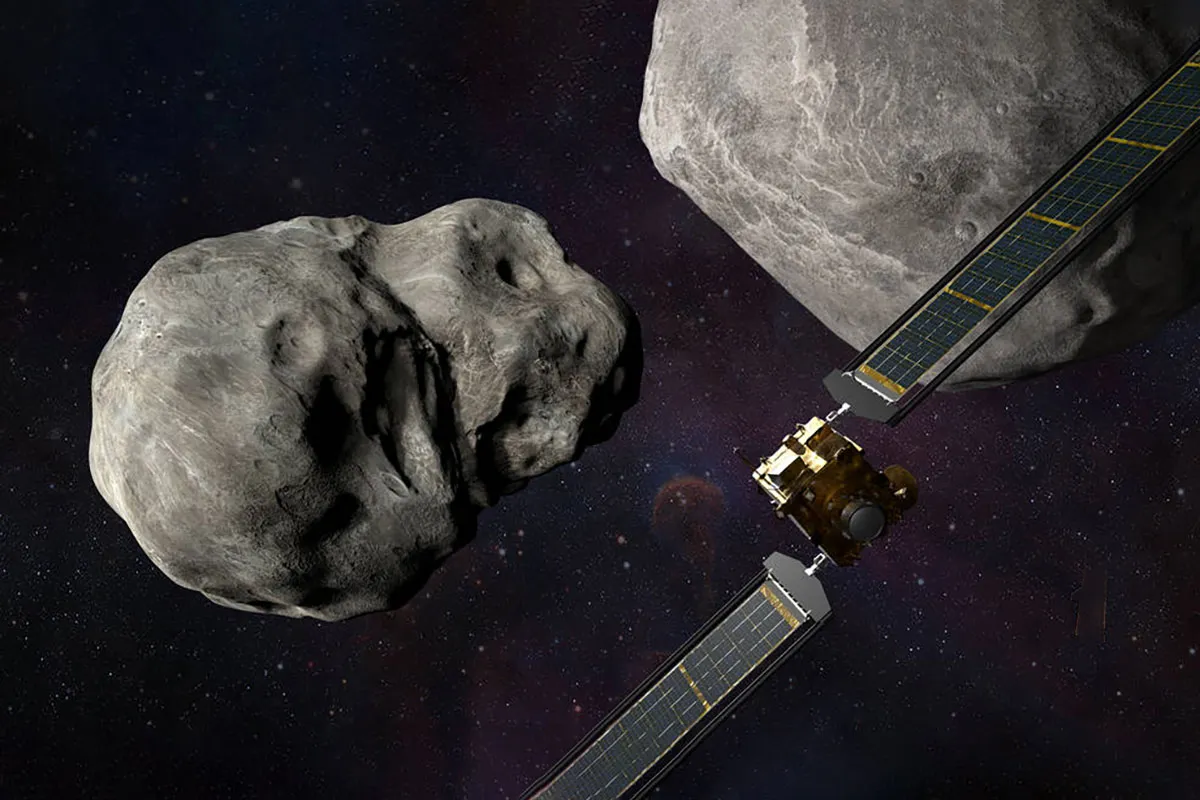This year, the news headlines have been dominated by UK politics, the energy crisis and the Ukrainian war. But there have been some fascinating scientific discoveries too. Here’s the proof…
1. The male pill is getting closer
A contraceptive pill for males developed at the University of Minnesota proved 99 per cent effective in preventing pregnancies in mice. The key compound, dubbed YCT529, works by shutting off a protein that controls sperm production, and has no observable side effects. Human trials are expected to begin next year.
Read more about the male contraceptive pill:
- What happens if a man takes a contraceptive pill?
- Why is it so difficult to make a contraceptive pill for men?
2. Hoverbikes are here

Unveiled at the Detroit Motor Show, Aerwins Technologies’ XTURISMO Hoverbike is the new form of transport we never knew we needed. It runs on a hybrid powertrain, can reach speeds of up to 100km/h (60mph) and has a range of around 40km (about 25 miles). Yours for just $555,000 (£465,000 approx).
3. Scientists cured 100 per cent of cancer patients in a small trial
In a small study at the Memorial Sloan Kettering Cancer Center in New York, all 14 colorectal cancer patients treated with an experimental drug were cured, without the need for chemotherapy. The drug works by blocking the activity of specific proteins on the surface of white blood cells. The team now hopes to run a larger trial on a more diverse range of patients.
4. The Large Hadron Collider is back online
In April, CERN’s atom smasher fired up for run three after being shut down for more than three years for maintenance and upgrade work. This time the collision energy has been ramped up to a world-record 13.6TeV for another four-year run. Ongoing experiments include further probing of the Higgs boson, an investigation of antimatter and a search for dark matter candidates.
5. We may resurrect the thylacine within the next decade
Geneticists based at the University of Melbourne announced their 10-year plan to genetically resurrect the thylacine in August. Also known as the Tasmanian tiger, the iconic marsupial has been extinct for nearly 100 years after being hunted out of existence by European settlers. The researchers plan to genetically edit stem cells taken from the fat-tailed dunnart – the thylacine’s closest living relative – to create and raise embryos using IVF techniques.
6. The Milky Way’s central black hole is supermassive

In May, the Event Horizon Telescope revealed the first-ever picture of Sagittarius A*, the black hole that lurks at the centre of the Milky Way. The eerie Eye of Sauron-like image shows the central black hole surrounded by a ring of matter colourised in orange, and is the most compelling evidence to date it is a supermassive black hole, EHT researchers say.
7. Sprouting cosy feathers helped dinosaurs survive freezing volcanic winters
Researchers at Columbia University found evidence that dinosaurs’ feathery insulation allowed them to survive the Triassic-Jurassic Extinction that killed off many reptiles 200 million years ago. Fossilised footprints of feathered dinosaurs found in a part of China known to have experienced freezing temperatures indicate that the dinos living there were able to tolerate the cold.
8. We’re still figuring out long COVID
While cases of coronavirus fell sharply after an initial surge earlier in the year, cases of long COVID still stubbornly persist. According to the ONS, there are currently more than two million people suffering from the illness in the UK. Symptoms vary from person to person but include fatigue, brain fog, joint and muscle pain and shortness of breath. It is still unknown exactly what causes long COVID, and there is currently no cure.
9. The effects of climate change may now be irreversible
This year saw the publication, in stages, of the sixth report by the UN’s Intergovernmental Panel on Climate Change (IPCC) – a report which both made for disheartening reading for many climate scientists, and in some ways offered a glimmer of hope.
Why disheartening? Because the sixth report confirmed what scientists have been saying for years: that human activity, particularly in the form of emissions of greenhouse gases, is responsible for the warming seen in the past few centuries, and that unless such emissions are radically reduced, we will soon bring about our own and our entire ecosystem’s destruction.
The report concluded that 1.5°C of global warming over the next couple of hundred years is already ‘baked in’ – it is too late to do anything about that. This makes the goals outlined in the landmark 2015 Paris Agreement – when nations agreed to keep warming below 2°C, and hopefully below 1.5°C – that much harder to meet.
To compound the problem, the IPCC report was followed later in the year by the COP27 summit, described by Prof Dann Mitchell, a climate scientist at the University of Bristol, as “a complete failure, other than some commitment on loss and damage. But we knew it would be.”

And the glimmer of hope? The IPCC’s sixth report was broader in approach than previous studies – looking in-depth for the first time at the role played in warming by short-term greenhouse gases such as methane, for instance.
“Reducing carbon emissions is always the best approach: stop the problem at its source,” said Mitchell. “But we know from decades of trying that this isn’t working so well, so we need other approaches to help with this. Methane is important, but it’s so short-lived – that’s why we haven’t been so bothered when compared with carbon dioxide.”
“One key thing was constraining climate sensitivity,” Mitchell continued. “The more important IPCC working groups showed potential adaptation pathways to mitigate the impacts.”
Those potential adaptation pathways outlined in the IPCC report are the other things we can do in terms of combating climate change and mitigating its worst effects, rather than simply reducing carbon emissions. This would include taking measures such as switching to a more plant-based diet (to reduce methane emissions), taking steps to curb both population growth and financial inequality, and striving to develop means by which we might remove CO2 that’s already in our atmosphere, rather than simply preventing it being released.
10. We can look even deeper into space
This year saw a raft of spectacular images released by NASA’s spanking new James Webb Space Telescope. Since July, the telescope’s scientific team has released a stream of images of distant galaxies and nebulae that are sharper and deeper than any that came before them.
11. Humanity is on track to walk on the Moon again
NASA’s Artemis 1 Moon rocket was successfully launched from Kennedy Space Center on 16 November. The launch went off without a hitch, and the Orion capsule separated from the Space Launch System rocket around eight minutes later. The capsule then entered lunar orbit where it will remain until it eventually returns to Earth to splash down in the Pacific Ocean.
12. Monkeypox didn’t take hold in the UK
Concerns were raised about a new virus threat sweeping across the country when cases of monkeypox infection were confirmed in England in May. Like COVID, it is a zoonotic disease – meaning it can spread from animals to humans. Symptoms include a high temperature, headache and an unpleasant blistery rash, but the infection can be treated with antiviral medication. As of October, there have been 3,650 cases in the UK.
13. We’re getting closer to reversing hearing loss
Researchers at the Salk Institute identified a protein that can help to regrow the tiny hair cells in the inner ear, known as stereocilia, which are responsible for detecting sound. Experiments carried out in mice showed that delivering the protein to stereocilia triggered their regrowth and improved or even restored hearing.
14. The Endurance has been sitting at the bottom of the Weddell Sea for 107 years
The wreck of the Endurance, the lost vessel of famed Antarctic explorer Sir Ernest Shackleton, was located by an expedition team put together by the Falklands Maritime Heritage Trust in March. It was found sitting 3km beneath the surface of the Weddell Sea off the coast of Antarctica. The ship has lain there since 1915 when it was abandoned by its crew after becoming trapped in pack ice.
15. We can (probably) save the world from asteroid impact
In September, NASA’s DART mission successfully changed the orbital velocity of a small asteroid called Dimorphos by crashing into it, confirming that astrophysicists’ best ideas about how to protect planet Earth from an asteroid strike do actually work.
Dimorphos, the smaller component in a binary asteroid system that also includes the larger Didymos, was never any threat to Earth – its orbit doesn’t bring it close enough. It does, however, come close enough that getting a spacecraft to reach it wasn’t an insurmountable problem, and it also just happens to be roughly the same size and shape as the sort of asteroids whose orbit may eventually put them on a collision course with Earth.
For these reasons, Dimorphos was chosen as the target for the DART mission. The name stands for ‘Double Asteroid Redirection Test’, and the goal was to see if the path of the asteroid could be changed by crashing a spacecraft into it, and so decreasing its orbital velocity (slowing it down).
This was no easy task: only one craft had ever been successfully landed on an asteroid before (Deep Impact, in 2005). As DART team member Prof Alan Fitzsimmons, from Queen’s University Belfast, told BBC Science Focus: “The maths involved is pretty straightforward – if you hit something fast enough it will move! The unknown is exactly how much, which DART spectacularly showed us. Getting a spacecraft travelling at over six kilometres per second to hit a small 160m asteroid that’s millions of kilometres away, when you’ve never directly seen the asteroid in a telescope? That’s much tougher!”

Not only did DART get there and crash into the smaller asteroid as planned, subsequent observations revealed that the impact had indeed slowed Dimorphos down, reducing its orbital velocity by between 1.75 and 2.54cm per second. This in turn makes it more susceptible to Dimorphos’s gravity, pulling it closer to its parent and reducing its orbital period from roughly 11.9 to 11.4 hours.
That might not seem a lot, but such changes increase gradually over time, and scientists have calculated that if a Dimorphos-like asteroid was hurtling towards Earth, decreasing its orbital velocity by as little as two centimetres per second, some 10 years before the projected impact, would be enough to shift the rock onto a non-Earth-threatening trajectory.
16. Brain cells in a dish can play video games
In what must be one of the most bizarre studies of the year, brain cells grown by Melbourne-based Cortical Labs learnt how to play the retro video game Pong. The system, named ‘DishBrain’, was created using human stem cells and neurons extracted from the brains of embryonic mice. It was trained using a simple electrical feedback system designed to correct its wrong moves.
17. Hurricane Ian was the costliest storm for 30 years
In late September, the southeast coast of the US was battered by Hurricane Ian. At the peak of the storm, wind speeds reached 250km/h (155mph), flood waters reached 4.5m (15ft) and an estimated 1.7 million people were forced out of their homes. Repairing the damage is estimated to cost up to $42bn (£35bn approx) – the largest sum since Hurricane Andrew in 1992.
18. Earth now holds more than eight billion humans
On 15 November, the United Nations announced that the world population reached eight billion – that’s one billion more than just 12 years ago. The staggering growth in numbers is due to improvements in medicine, hygiene and nutrition, along with persistently high levels of fertility, said the UN researchers.
19. Fusion breakthrough brought unlimited clean energy closer
In December 2022, Scientists at the National Ignition Facility (NIF) in the US successfully generated a net gain in energy via anuclear fusionreaction for the first time in history.
Producing more energy from a fusion experiment than was put in, the experiment may represent the beginning of the end for fossil fuels. The only catch? The energy created in this experiment was tiny – only enough to boil a few kettles.
"This is a tremendous step in the right direction. It doesn’t mean that we have solved all the problems, but it does highlight that with continued hard work the dream of fusion energy is achievable," physics author Stuart Clark told BBC Science Focus.
Read more about nuclear fusion:
- Why do both fission and fusion release energy?
- If the Sun is constantly losing mass via nuclear fusion, how come it’s not getting any smaller?
- Why does the fusion of hydrogen in stars release energy?
This article first appeared in issue 385ofBBC Science Focus –find out how to subscribe here